A 1998 crown victoria with an aftermarket perfect circle idler arm
installed.
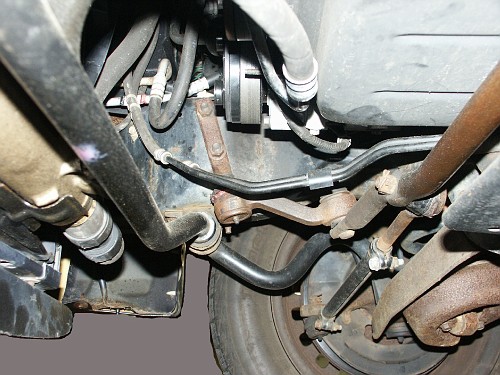
A 2000 crown victoria with a badly worn stock original equipment ford
idler arm installed.
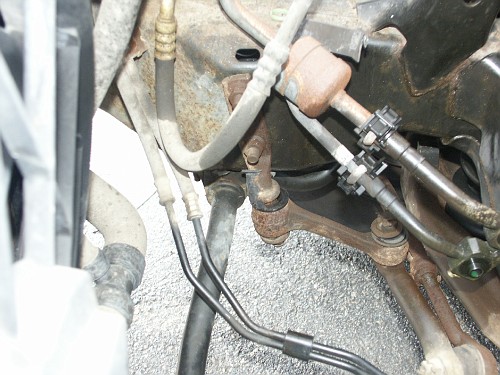
A 1997 crown victoria with an aftermarket perfect circle idler arm
isntalled
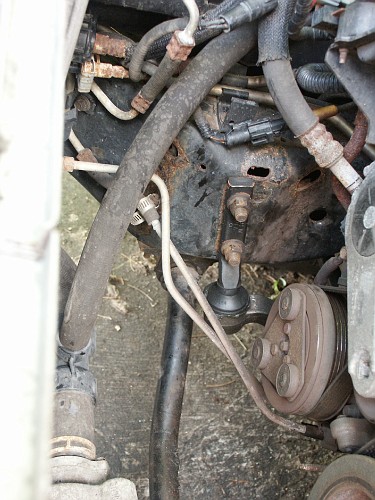
A 1998 crown victoria with a wornout aftermarket napa idler arm
installed
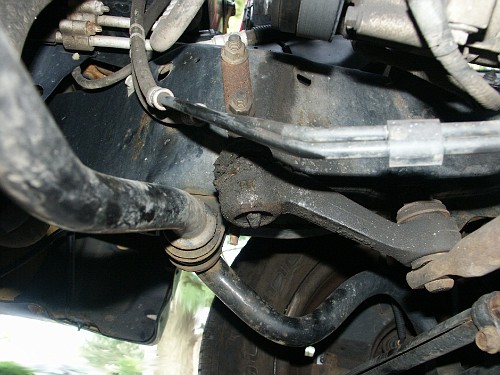
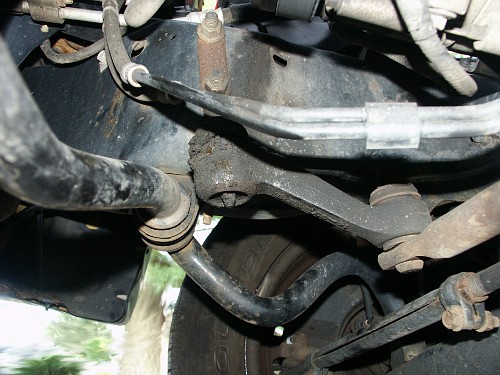
A 1998 crown victoria with the idler arm removed
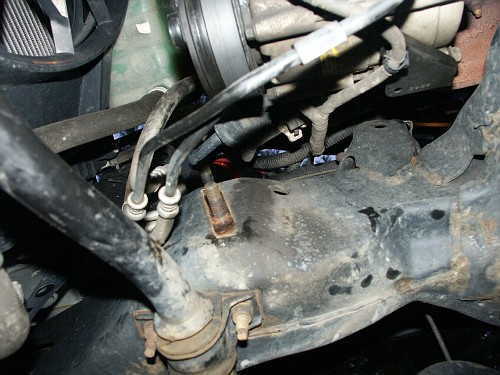
The idler arm & pitman arm removed and the center link hanging by
the tierods.
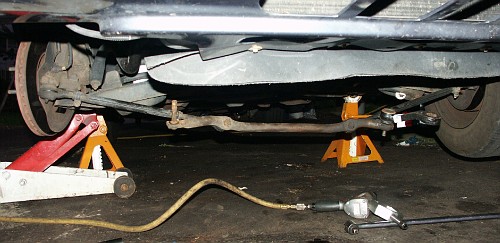
Here's the stubborn idler arm from a 1997 crown victoria being pressed
off the center link with a pitman arm puller
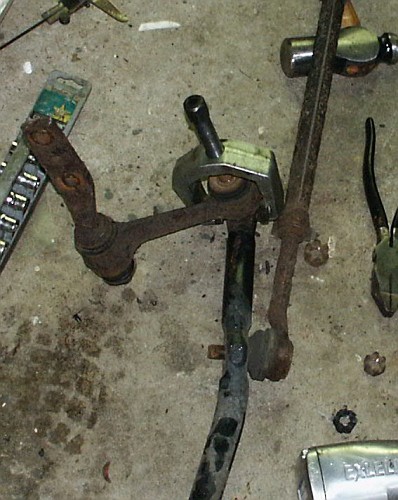
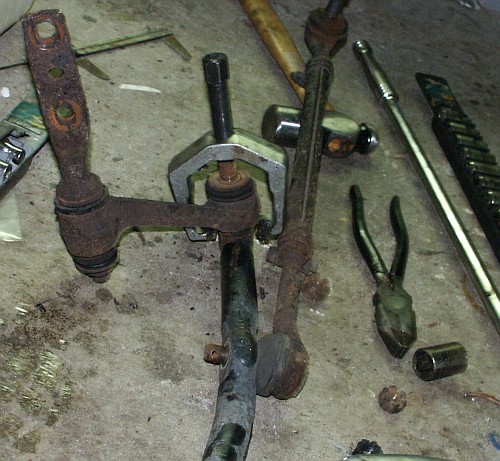
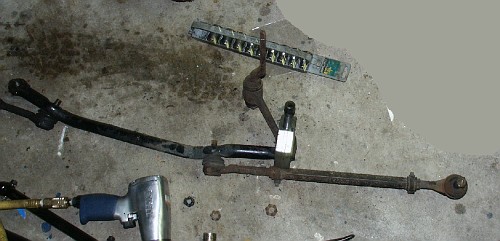
After the idler arm was removed from the centerlink, the sleeve was
still stuck on the centerlink stud
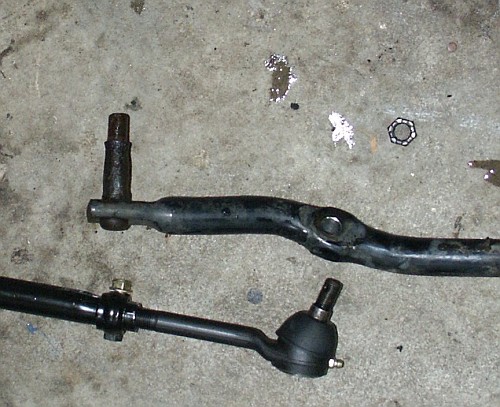
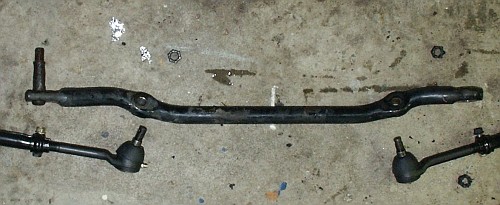
So the remainder of the idler arm stud was removed using a hammer and
chisel
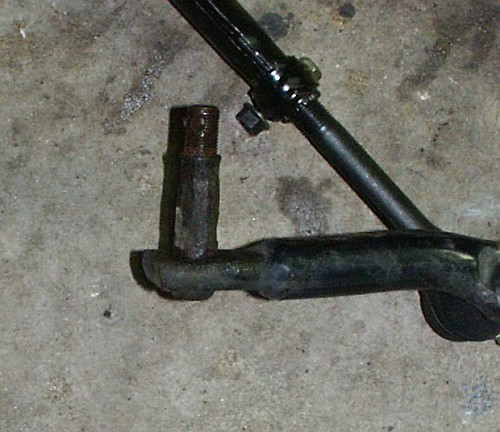
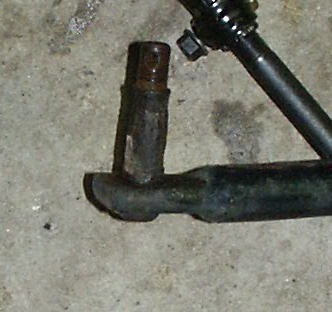
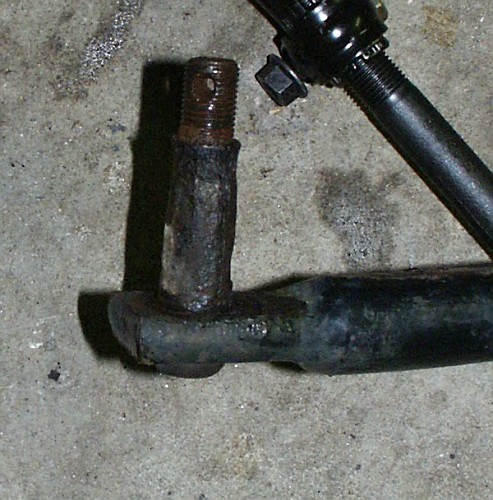
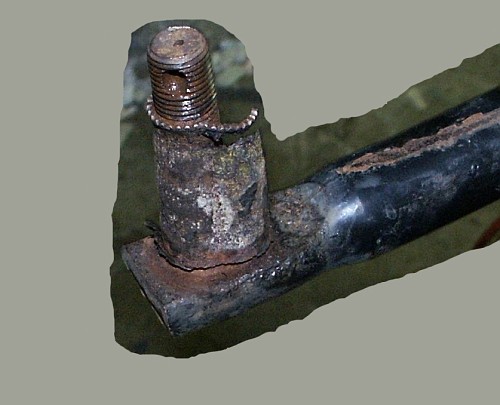
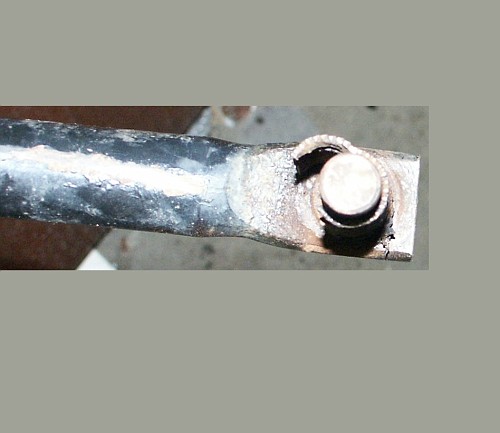
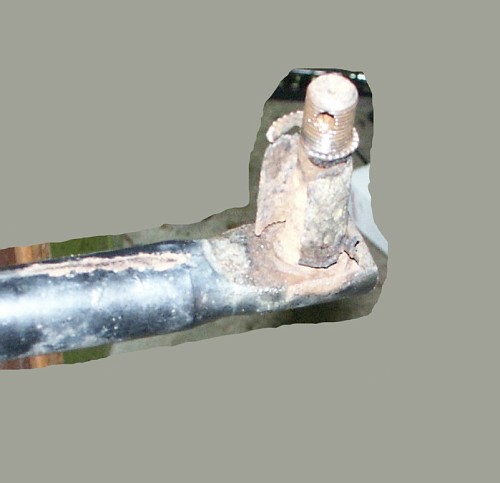
The remainder of the stubborn idler arm sleeve is finally removed from
the center link
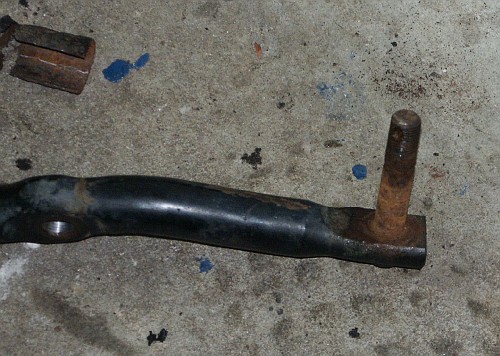
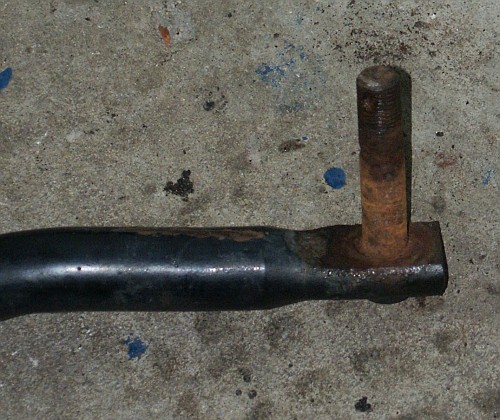
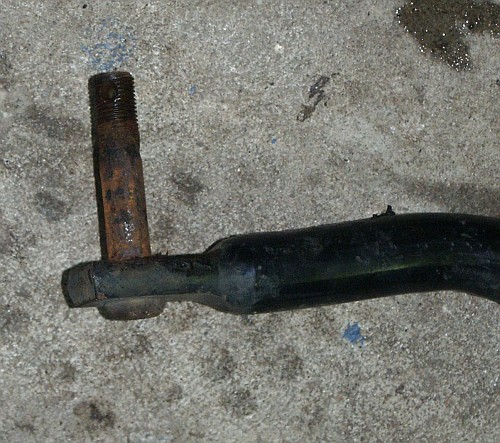
A new aftermarket perfect circle idler arm can be installed
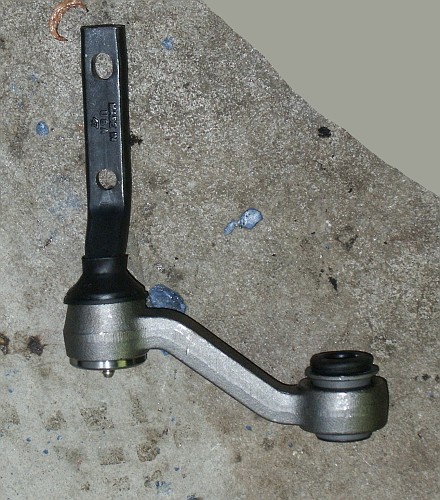
This idler arm utilizes a metal bearing at the frame junction point
rather than a rubber bushing like the original equipment part.
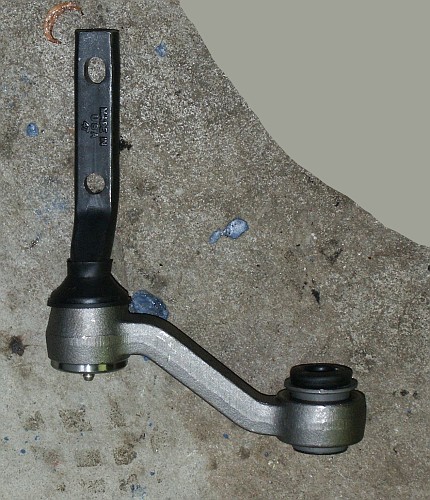
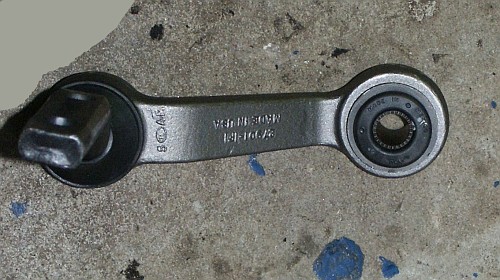
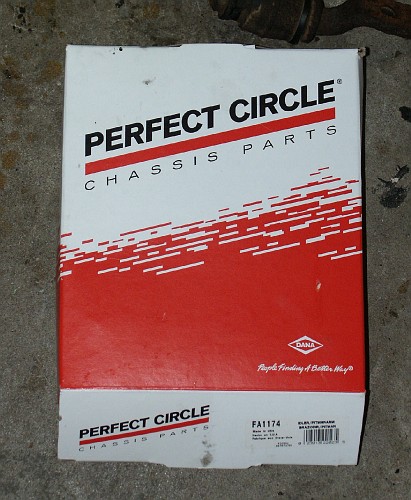
The perfect circle replacement idler arm next to the stock original
equipment idler arm
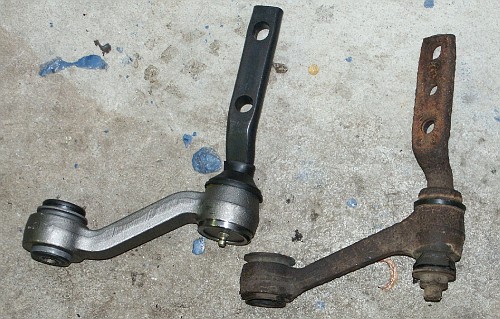
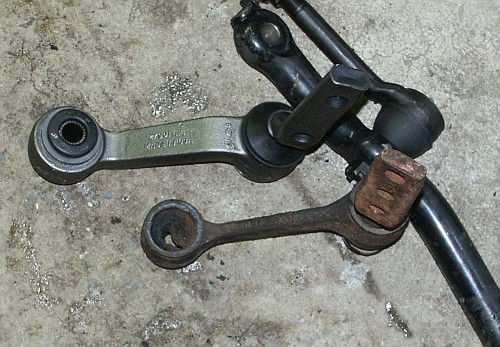
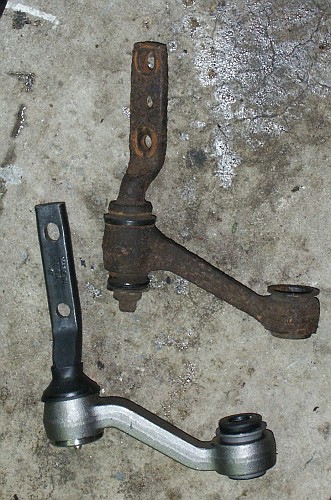
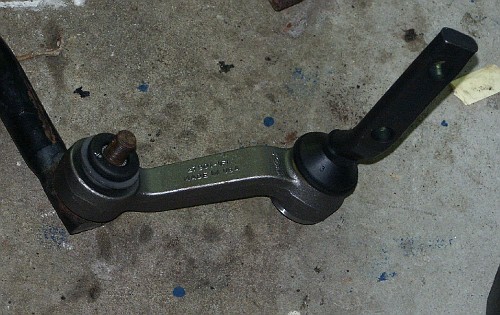
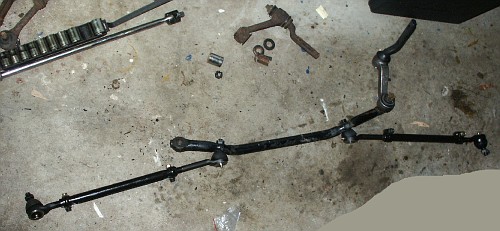
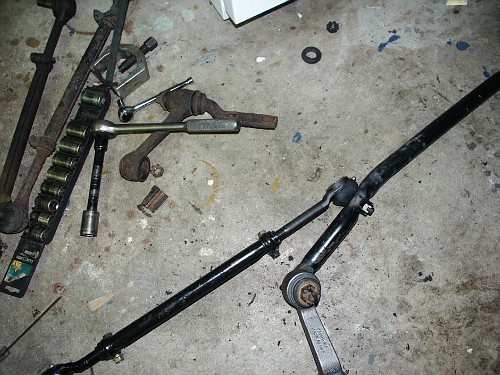

The new idler arm installed onto a 1997 crown victoria police cruiser

Most of crown victoria idler arms are retained to the centerlink
utilizing a
catellated nut and cotterpin like the tierod fastening system pictured
here.
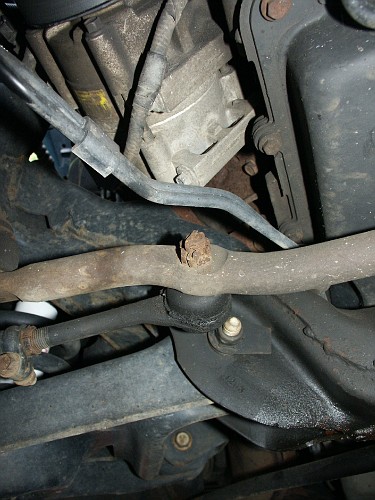
If the transmission fluid cooler lines in your crown victoria are badly
worn, they may drag against the surface of the idler arm. This could
cause poor returnability to center, or cause leaks in the lines from
abrasion.
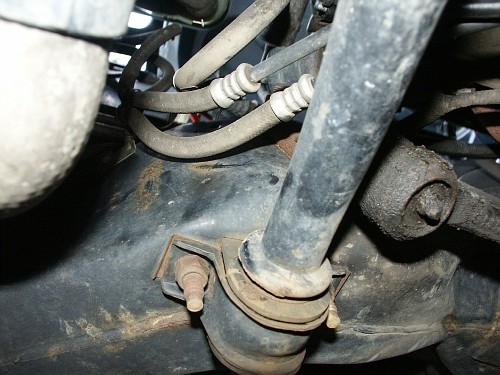
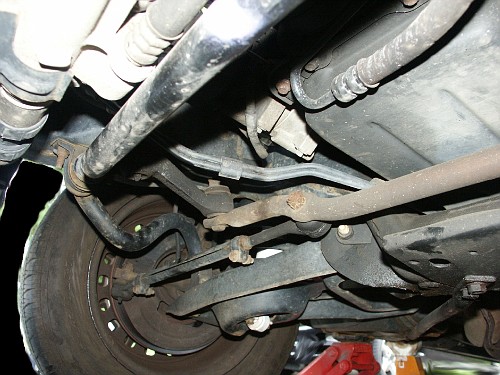
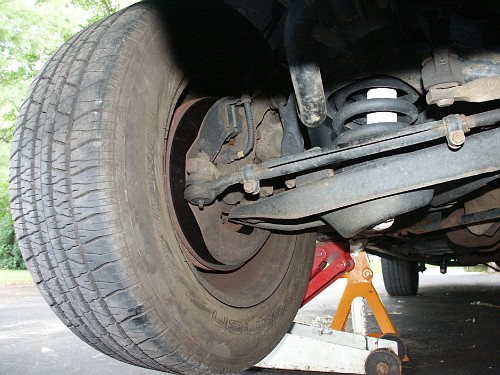
Here is the side of the passenger's front frame rail that an extension
bar and ratchet can be placed into to hold the idler arm studs
stationary
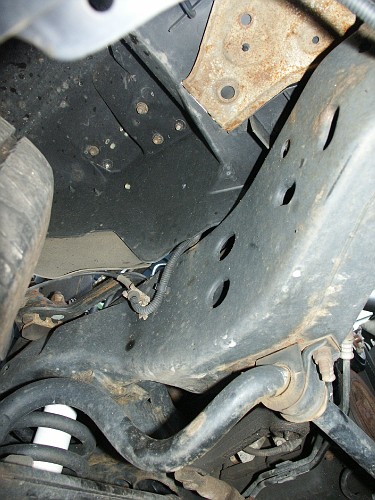
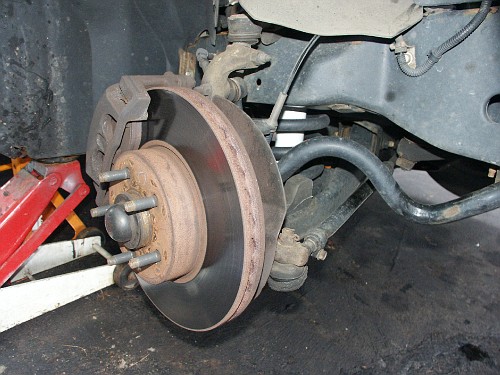
And the front passenger's frame rail from a different angle
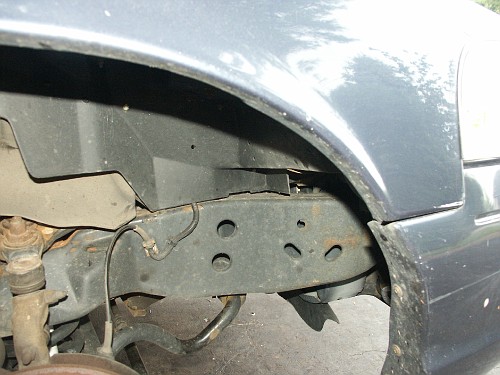
You can spray penetrant oil on the idler arm fasteners from the top of
the engine bay
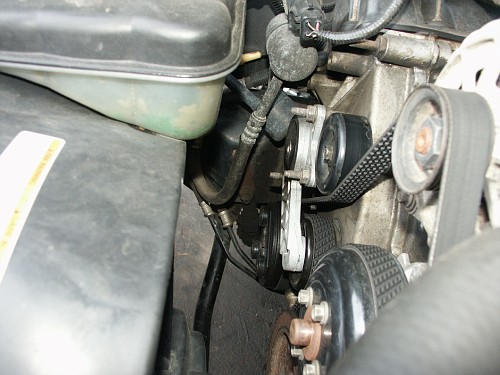
For lubricating the aftermarket idler arm, mobil1 synthetic grease was
used.
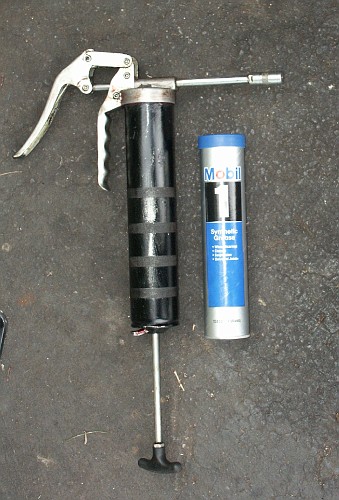
Here is the idler arm stud and nut from a 1997 crown victoria. This
stud is supposed to remain stationary in relation to the frame rail,
but things were rather corroded and the knurls on the idler arm bolt
stripped off.
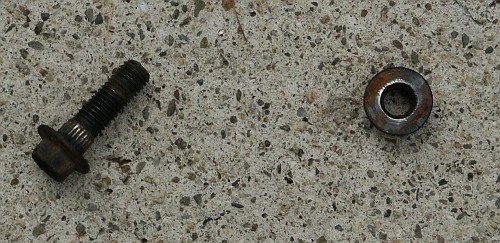
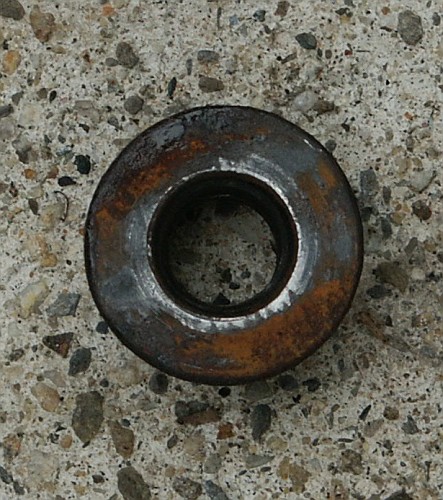
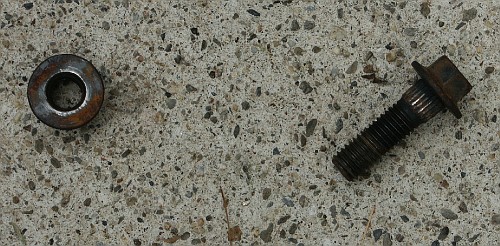
A closeup of the idler arm knurl area. When the knurls strip off, one
can use a socket and breaker bar to hold the bolt stationary
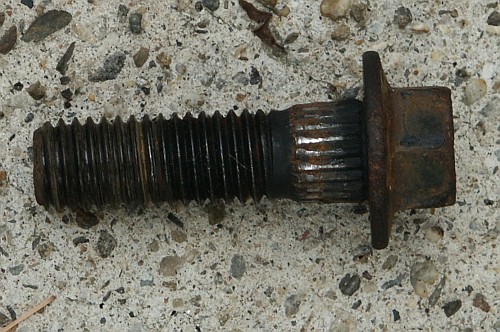
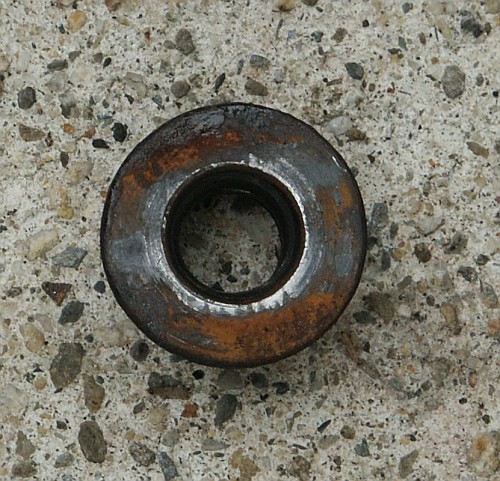
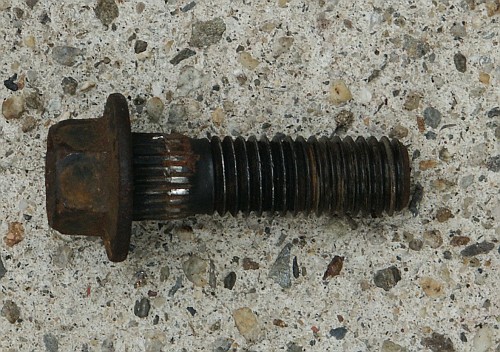
Here's one of the catellated fasteners which retains the center link to
the idler arm, and one of the nuts which holds the idler arm to the
vehicles frame.
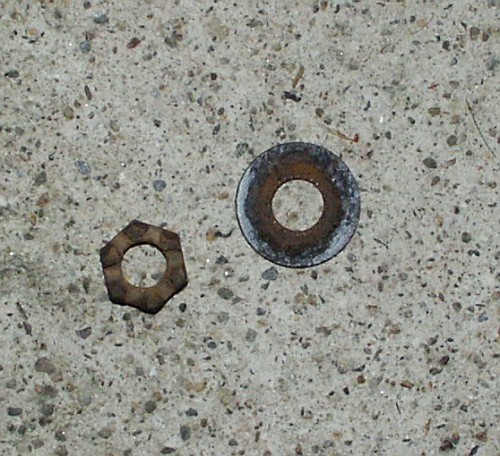
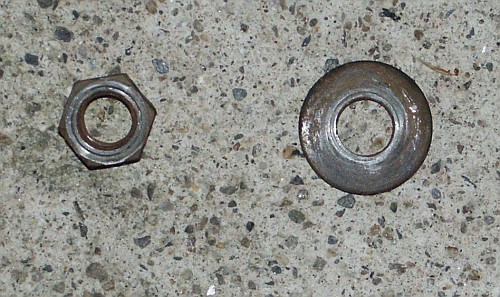
Here's an aftermarket dana perfect circle idler arm with the rubber
bushing at the centerlink side
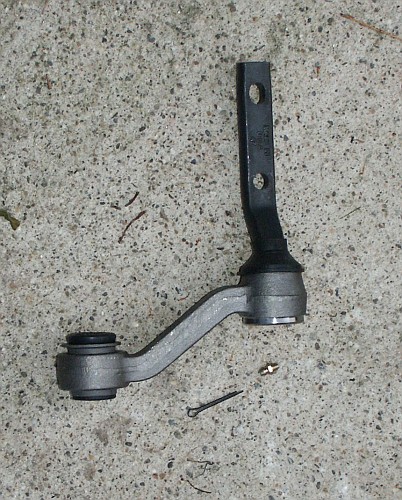
Here's the cotterpin which retains the idler arm to the centerlink and
also the grease fitting for the idler arm bearing
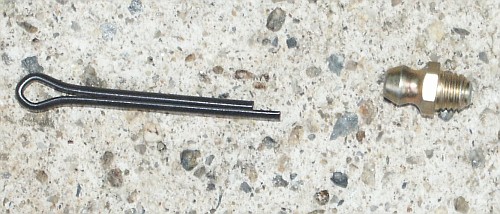
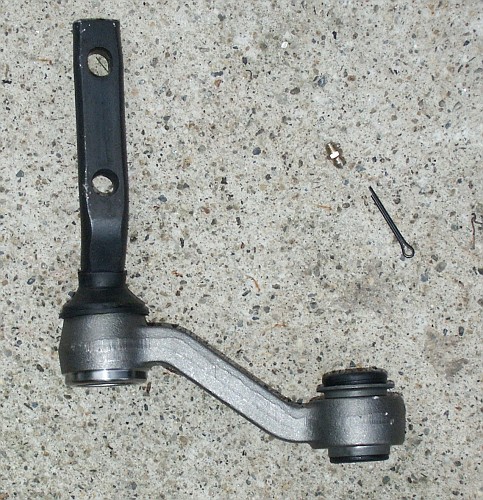
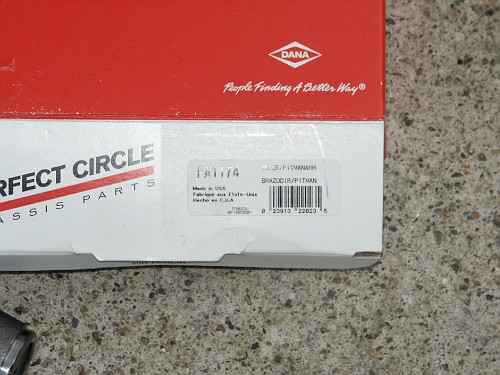
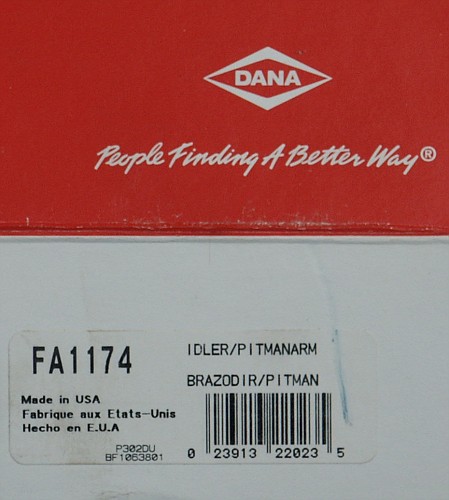
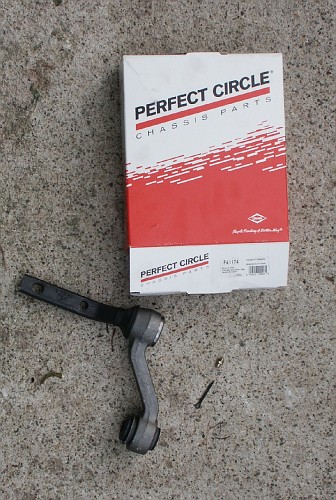
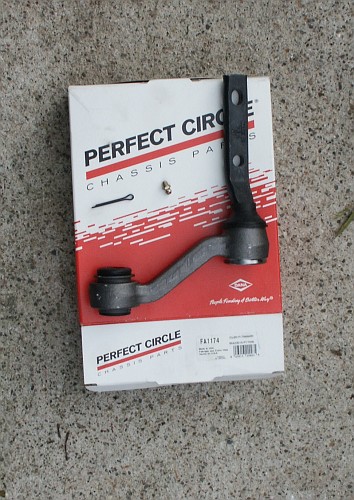
Here's an aftermarket MOOG idler arm for a crown victoria
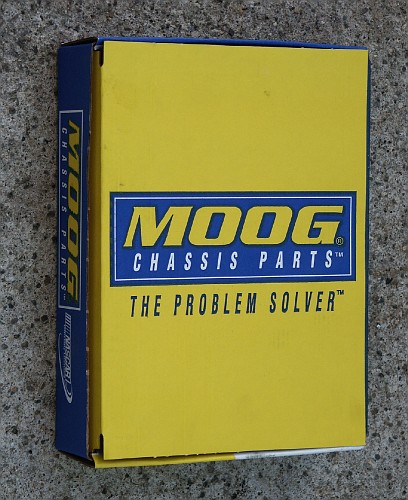
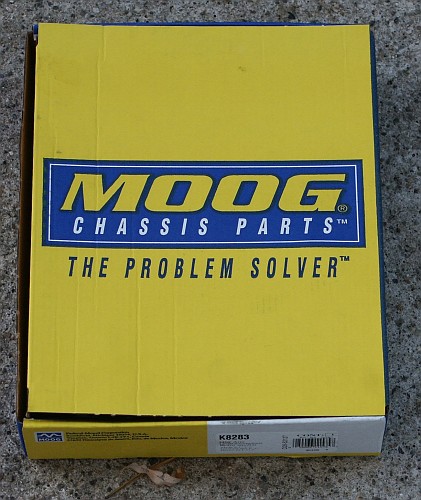
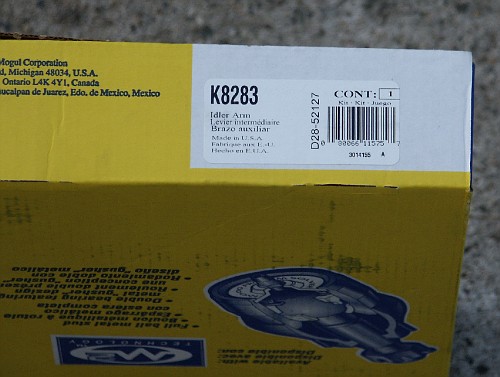
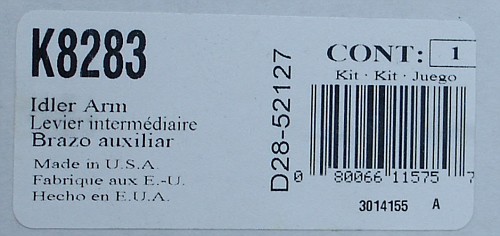
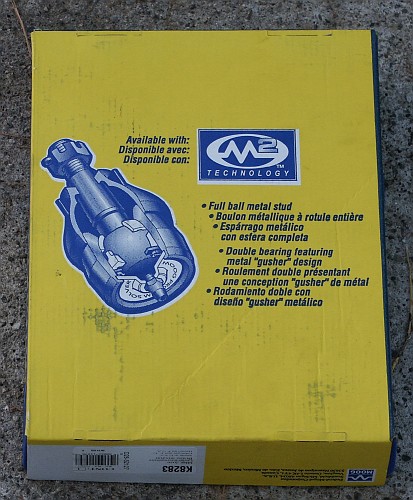
This unit utilizes a solid metal bearing at the centerlink junction
rather than the rubber bushing pictured above. The metal bushing
improve toe control to some extent, but also increase the load on the
vehicle's frame in the idler arm area.
If this unit is installed at a commercial repair shop, a significant
advantage to this design is that the centerlink junction can be
installed at any orientation. With the rubber bushing, the rubber must
be installed at a neutral untwisted position in order to have a good
service life.
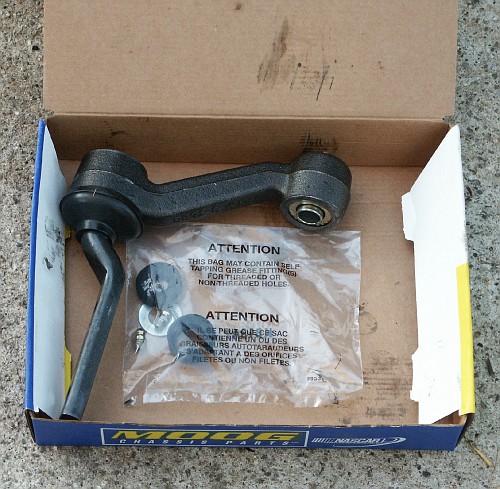
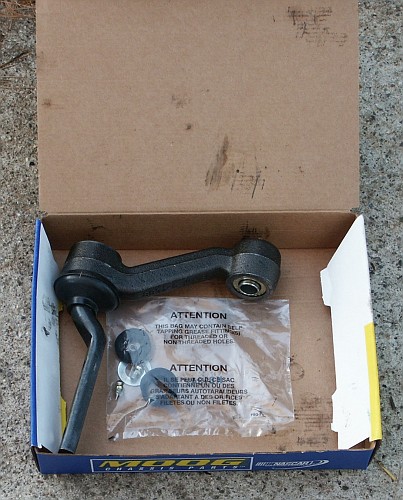
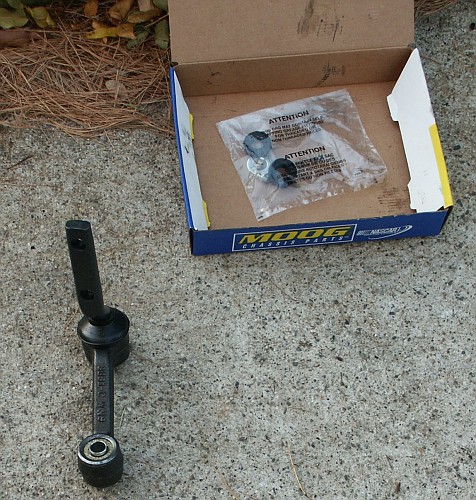
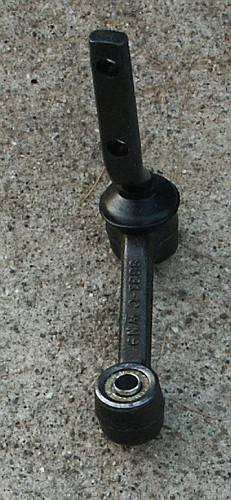
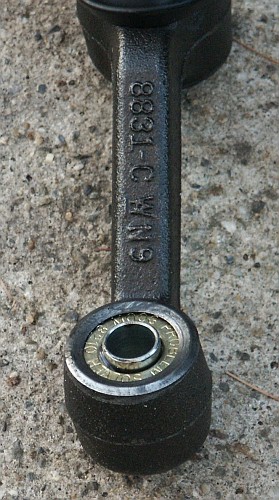
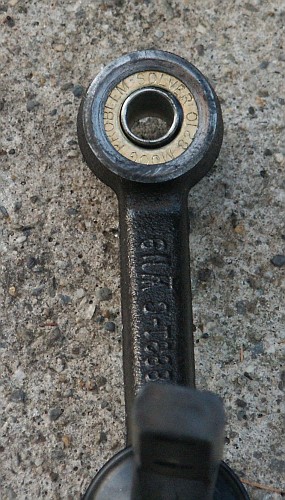
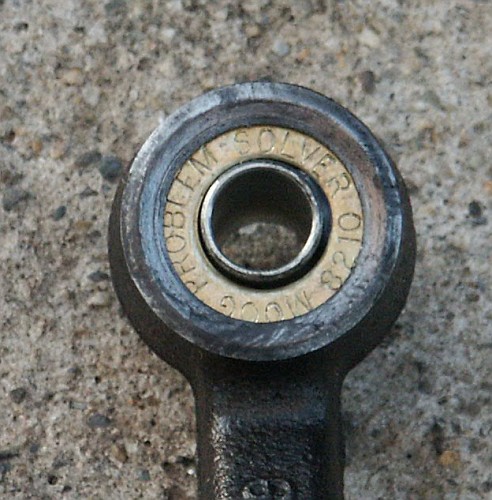
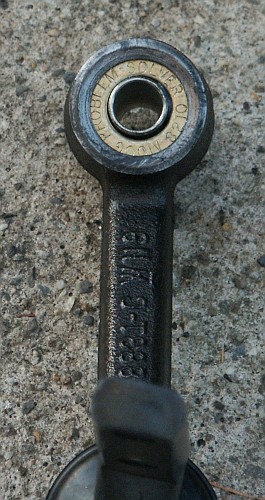
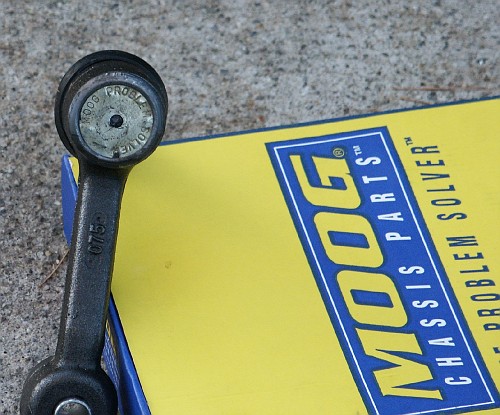
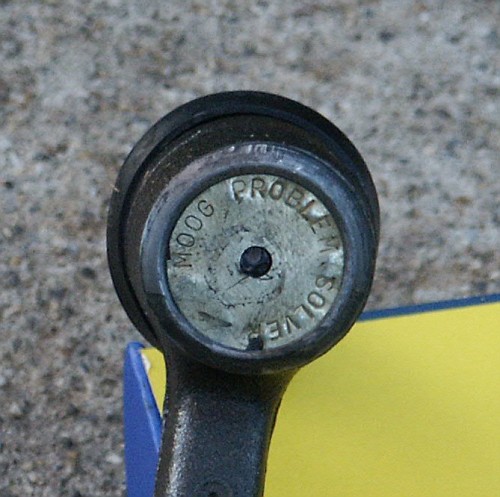
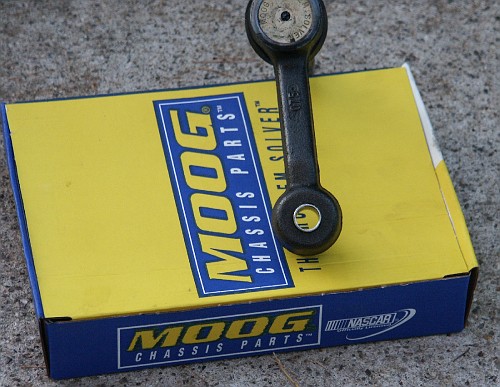
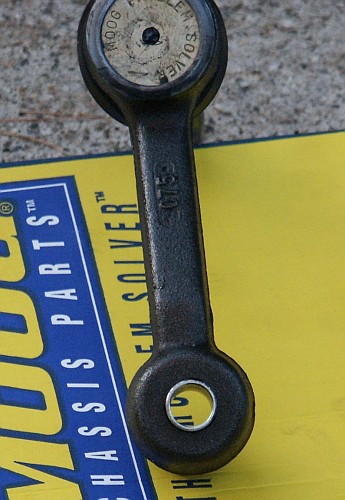
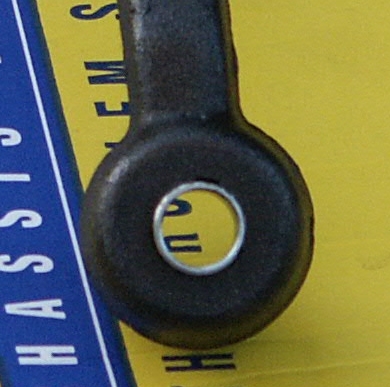
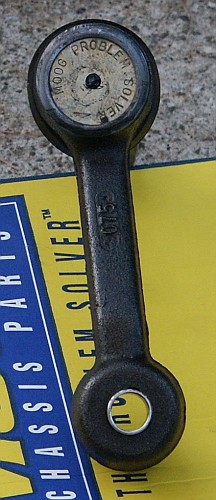
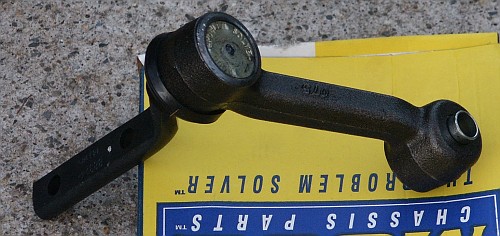
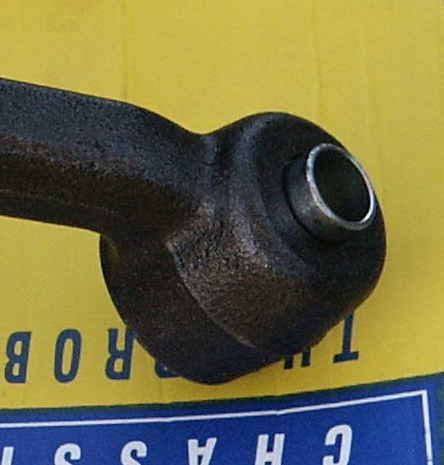

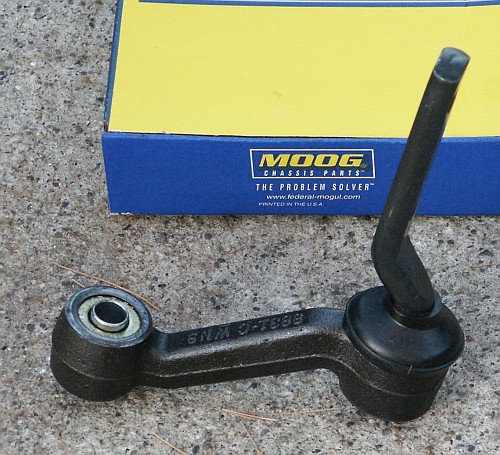
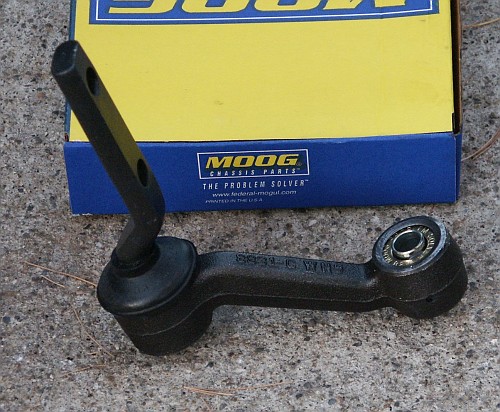
There has been some talk about durability of idler arms.
The stock original equipment ford idler arm with rubber bushings at
both junction points appears to have the longest service life out of
any idler arm.
The idler arms with metal greaseable joints have a reasonably long life
as long as you grease them regulary. But if you don't grease them
periodically, the service life will likely be rather short.
Also, much of the ordinary car owning general public think that their
oil change shop will grease their suspension components during the oil
change. But most oil change shops today actually do not grease
suspension joints as part of their oil/lube/filter specials. And if
they do, they may use a dirty grease gun with significant debris inside
which will shorten the life of the suspension joints. Some shops have
also been known to use pneumatic air grease guns which explode the
protective boot around the metal joint with excessive pressure.
















































































